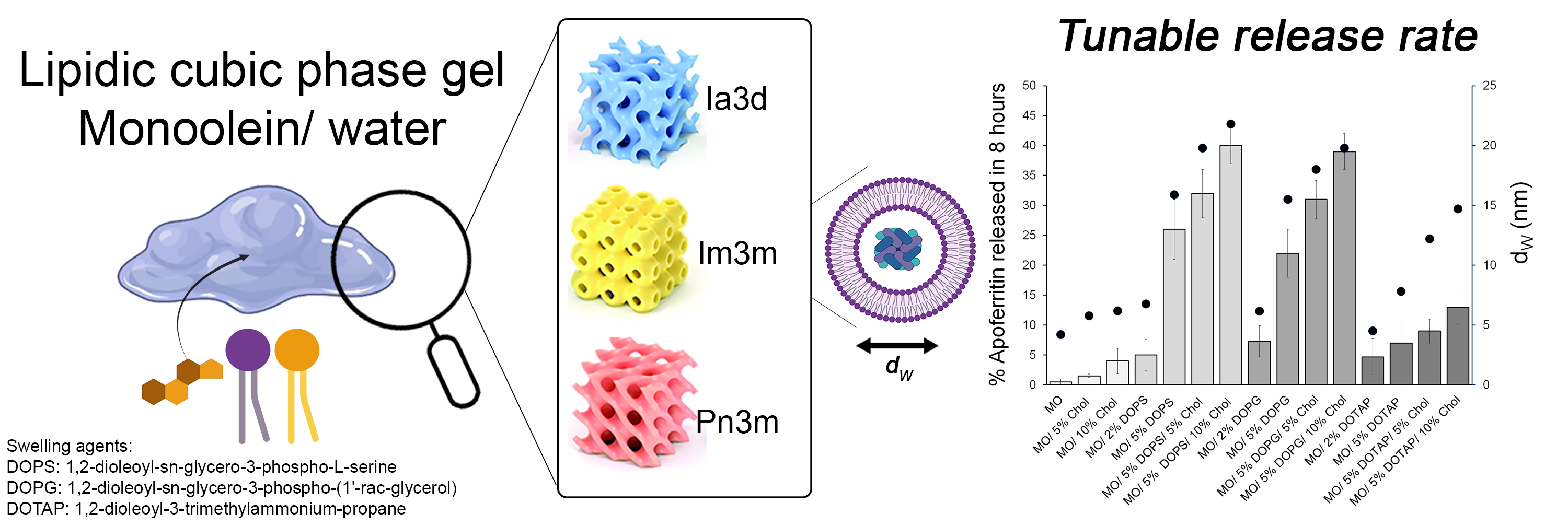Lipidic based-gel with tunable release properties as a platform for local delivery of biotherapeutics
Lipid mesophases are able to incorporate and release a plethora of molecules, spanning from hydrophobic drugs to small hydrophilic proteins and therefore they have been widely used as drug delivery system. However, their water channels of 3–5 nm do not allow the release of large hydrophilic molecules such as monoclonal antibodies and therapeutic proteins. To overcome this major geometrical constrain, we designed a gel by mixing monoacylglycerol lipids, generally recognized as safe for human and/or animal use by FDA, and phospholipids, to obtain a material with swollen water channels suitable to host and further release macromolecules [1]. Apoferritin, a 12 nm nanocage protein with intrinsic tumour-targeting properties able to incorporate several molecules, was selected here as a hydrophilic model protein to be embedded in the biocompatible gel. When immersed completely in the release media, mesophases with a swollen water channel of 22 nm, composed of monoolein and doped with 5 mole % of DOPS and 10 mole % of Chol allowed us to achieve a protein release of 60 %, which is 120 times higher with respect to that obtained by employing non-swollen-LMPs composed only by monoolein. Swollen lipidic mesophase allow to administer locally biomacromolecules in those diseases easily reachable by a local application such as rectal or vaginal cancer, thus reducing the drawbacks associated with a parenteral administration. The system prompts a release profile suitable for a mucosal application paving the way for a local application of other biomacromolecules including monoclonal antibodies.
